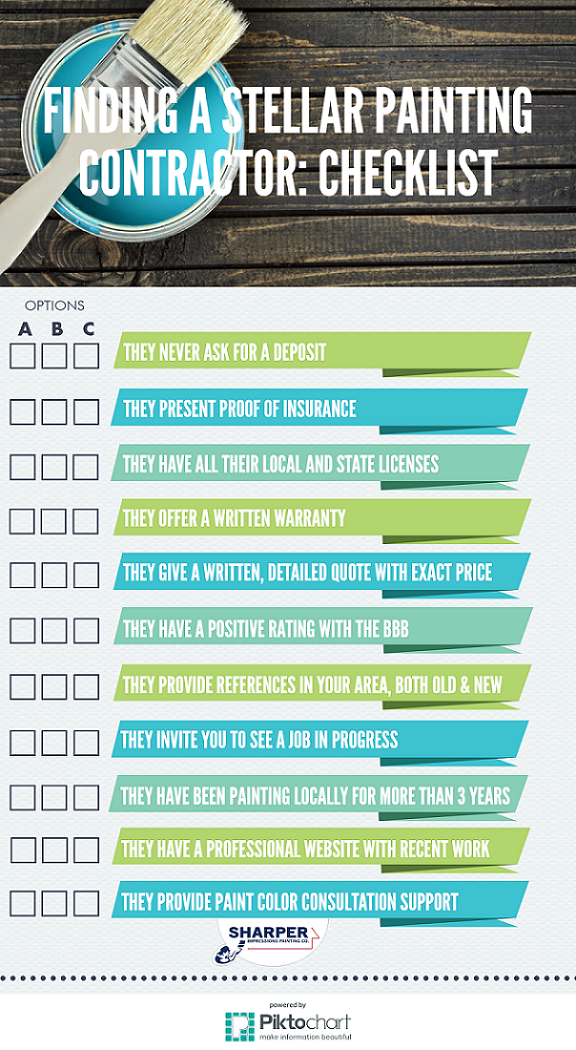Weather Conditions And Their Effect On Your Outside Paint Project
Weather Conditions And Their Effect On Your Outside Paint Project
Blog Article
Writer-Conradsen Thuesen
Comprehending how weather can affect the result of an external painting venture is vital for attaining a flawless surface. From Click At this website changing paint bond to humidity levels impacting drying out times, each element of weather condition plays a significant role in the success of your project. Furthermore, wind speed and rainfall can introduce unanticipated challenges that may compromise the quality of the result. As we navigate with the subtleties of weather's effect on external paint, it ends up being obvious that precise preparation and strategic timing are vital for ensuring a professional and durable outcome.
Suitable Temperature Array for Painting
When taking into consideration outside painting projects, the excellent temperature variety plays a critical role in attaining ideal outcomes. Paint in the appropriate temperature conditions guarantees that the paint sticks appropriately to the surface, dries out uniformly, and cures successfully. Generally, the suggested temperature level variety for exterior paint is between 50 to 85 levels Fahrenheit.
Paint in temperature levels below 50 levels Fahrenheit can cause concerns such as poor paint adhesion, prolonged drying out times, and an increased likelihood of breaking or peeling.
On the other hand, painting in temperature levels over 85 levels Fahrenheit can create the paint to completely dry too promptly, bring about blistering, gurgling, and an irregular coating.
To achieve the most effective results, it is important to examine the weather forecast before starting an external paint job. Preferably, objective to repaint throughout moderate climate condition with modest temperatures and reduced moisture levels.
Impacts of Humidity on Paint Drying
Humidity levels significantly influence the drying process of paint put on exterior surfaces. High moisture can lengthen the drying time of paint, leading to potential concerns such as leaking, streaking, or perhaps the development of bubbles on the painted surface area. Excess dampness in the air reduces the dissipation of water from the paint, hindering the healing procedure. This is specifically troublesome for water-based paints, as they rely upon dissipation for drying out.
On the other hand, reduced humidity levels can likewise influence paint drying out. Extremely completely dry conditions may trigger the paint to dry as well rapidly, bring about bad adhesion and a rough coating. In such instances, adding a paint conditioner or spraying a great mist of water airborne can aid control humidity degrees and boost the painting result.
To make sure optimum drying out conditions, it is a good idea to repaint when the moisture levels range in between 40% and 50%.
Surveillance humidity levels and taking proper steps can aid achieve a smooth and resilient paint coating on exterior surface areas.
Wind and Precipitation Considerations
Wind rate and rainfall are crucial aspects that substantially affect the success of an outside paint task.
When it pertains to wind, both rate and direction are essential considerations. High wind rates can trigger paint to completely dry too quickly, resulting in a subpar do with possible problems like fracturing or unequal texture. Additionally, wind can carry particles that might follow the wet paint, causing imperfections. Consequently, painters ought to aim to deal with days with light to modest winds for optimum painting conditions.
On Commercial Grade Interior Paint , rainfall, whether rain or snow, can be exceptionally destructive to the result of an exterior paint job. Dampness from rainfall can hinder paint adhesion, creating peeling and bubbling over time. It is vital to stay clear of paint during wet or snowy weather condition to guarantee the long life and top quality of the paint task. Painters must likewise enable ample time for the surface to completely dry completely after any type of rainfall before commencing or resuming the paint process.
Final thought
To conclude, weather play a substantial function in the end result of an outside paint job. The ideal temperature array, humidity levels, wind speed, and precipitation all add to the success or failing of the paint work.
It is important to think about these elements and strategy accordingly to make certain appropriate paint adhesion, drying times, and overall high quality of the ended up product.
